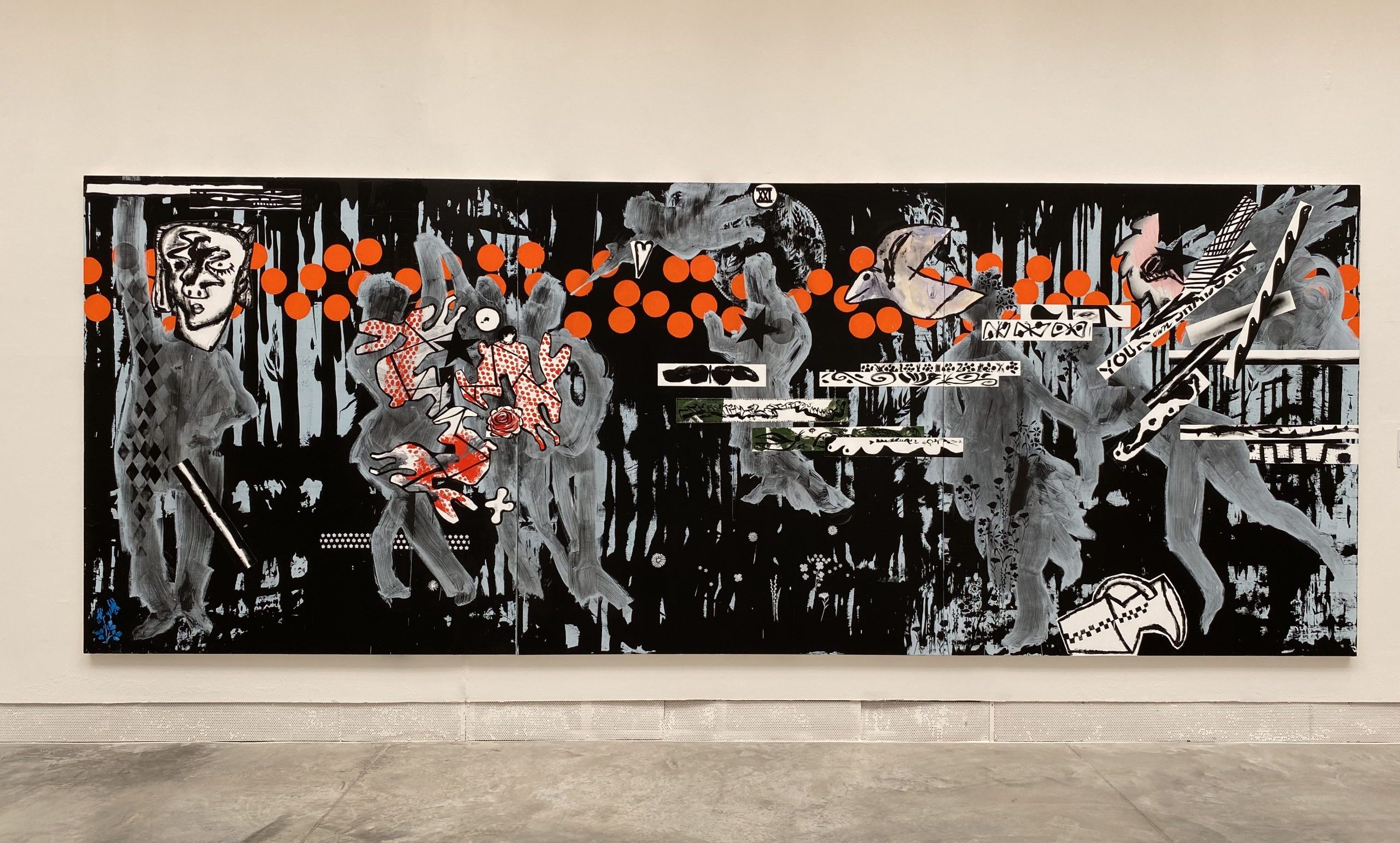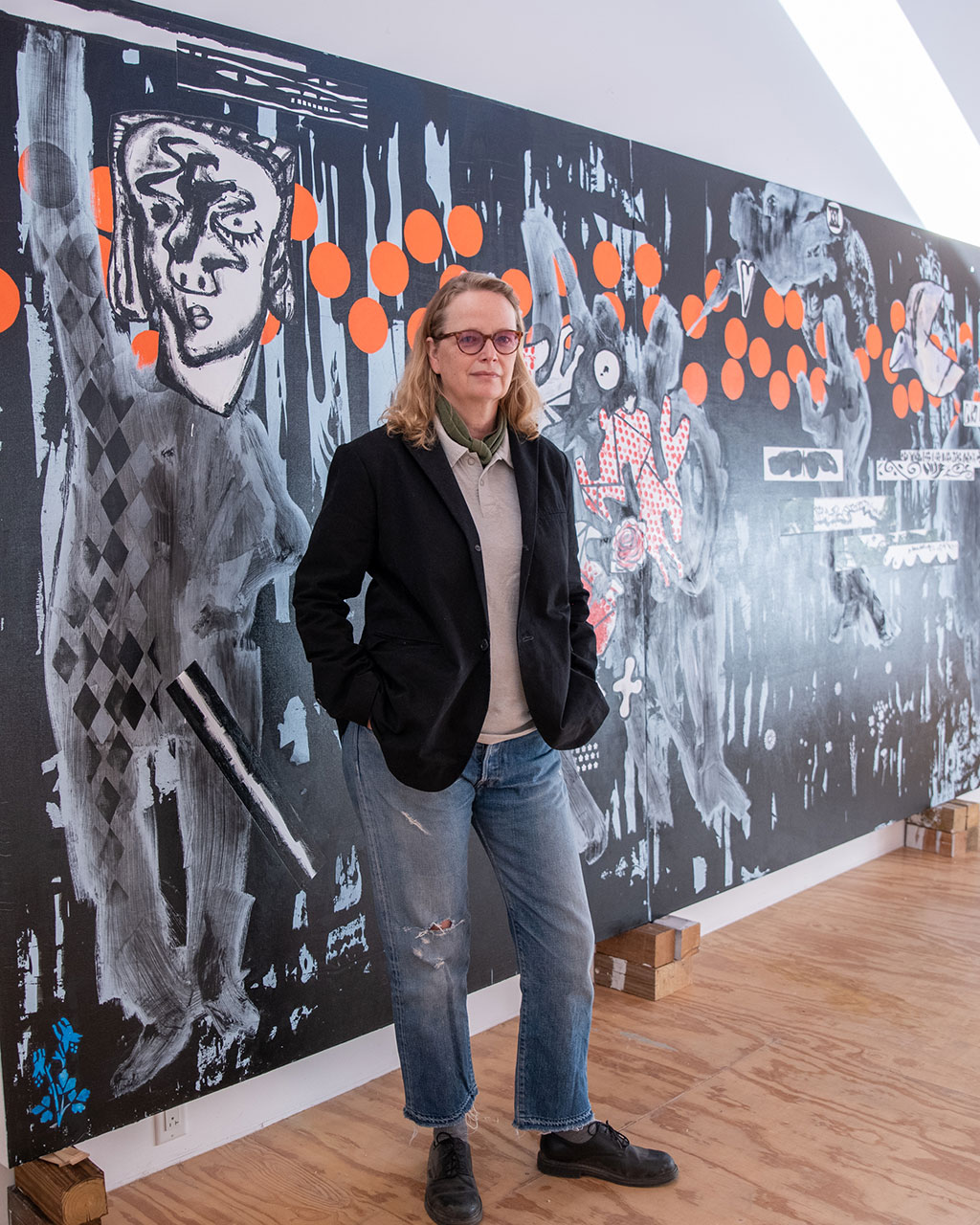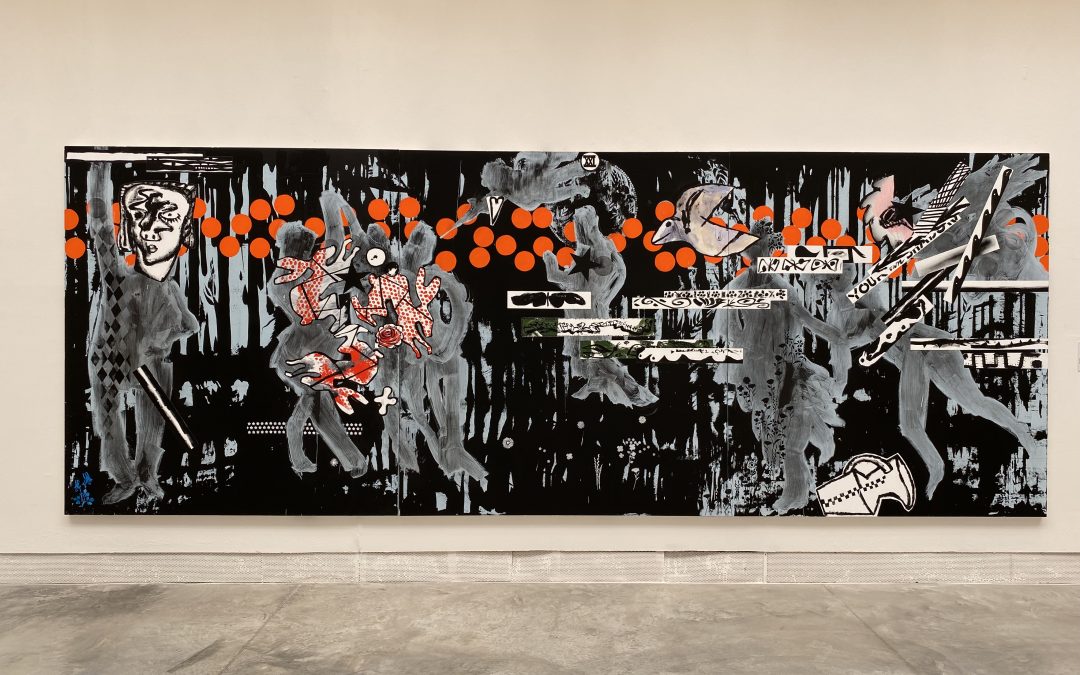The rebellious nature of “Primavera 2020” by Charline von Heyl
How would you imagine Sandro Botticelli’s “Primavera” reinterpreted in today’s vision?
Exhibited at the Central Pavilion at the Giardini during the last 59. Venice Art Biennale, “Primavera 2020” detaches from the idealized original to show us the dissonant and obscure side of spring and question us about the relationship between humans and nature.

Charline von Heyl, Primavera 2020, 2020, exhibted at 59. Biennale d’Arte di Venezia.
Courtesy Biennale di Venezia
Large grey colour washes recall immediately Botticelli’s original figures, which in von Heyl rework are located following the same representative outline. These characters are however perceived in a completely different way, left in a blurred and ambiguous indefiniteness, which could be seen as almost disturbing. The addition of tribal masks, references to graphic and advertising art like stencil flowers and cartooned rabbits, and the use of lively colours breaking the composition: these are all elements which characterize von Heyl works, moving away from a simple reinterpretation of the original and creating a new and innovative image. The painting’s multi-layers and the various pictorial techniques used in the composition do not create depth in the painting, leaving the observer lost in the vast and dystopic vision of the work.

The artist Charline von Heyl.
Courtesy Primavera Project
Exploring topics like girlhood, transformation, desire and ambivalence, the tiny violent crack perceptible in Botticelli’s painting is transformed into a dissonant fracture in the “Primavera 2020” rework. This feeling leaves the observer to question the peaceful cohabitation of humans and nature. Engaging the medium’s tropes of beauty and subjectivity, von Heyl consistently redefines the boundaries of contemporary painting.

